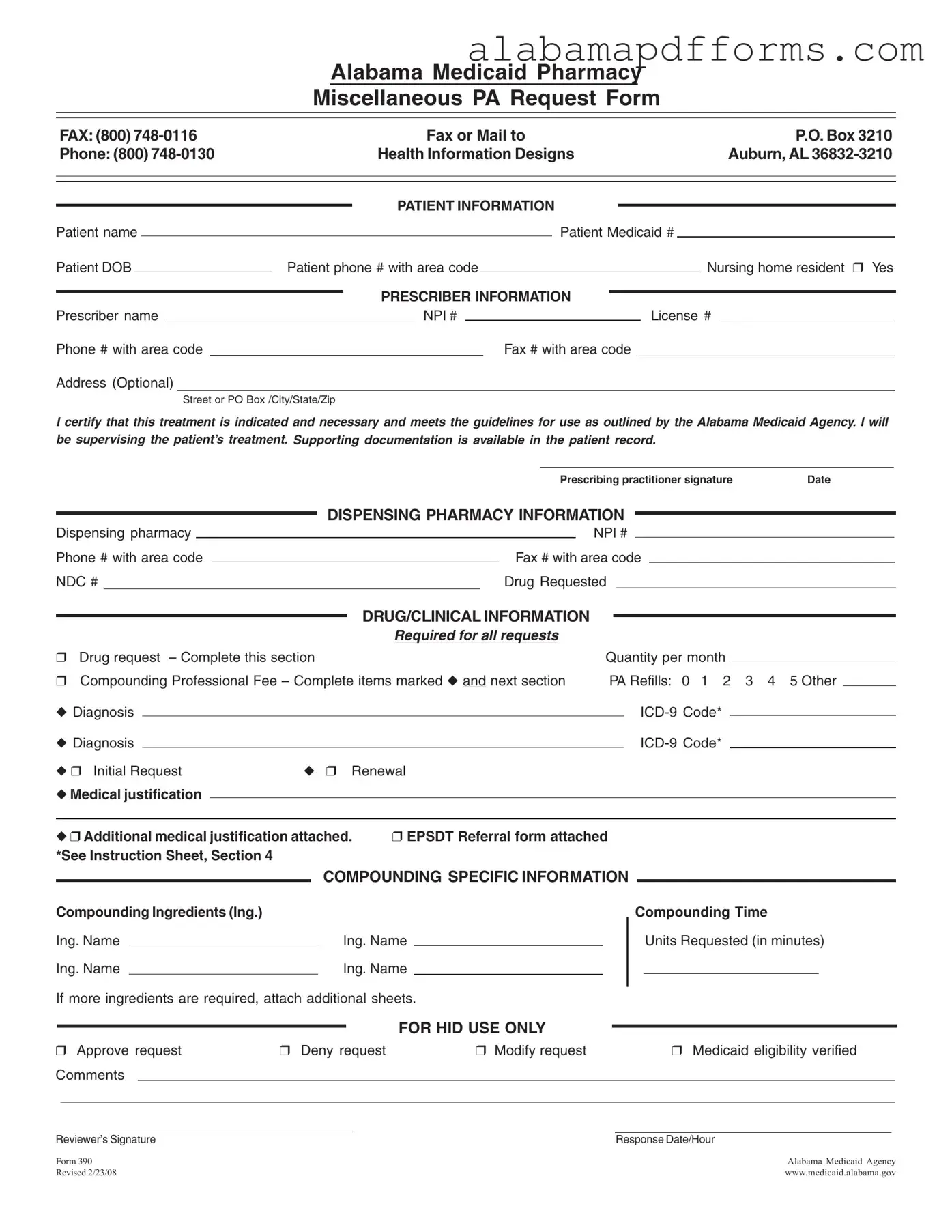The Alabama 390 form serves as a crucial tool in the realm of Medicaid pharmacy services, specifically designed for submitting prior authorization requests for various medications. This form is essential for healthcare providers, as it ensures that patients receive the necessary medications while adhering to the guidelines set forth by the Alabama Medicaid Agency. The form collects vital patient information, including the patient's name, Medicaid number, date of birth, and contact details, which help streamline the approval process. Additionally, prescribers must provide their credentials, including their name, National Provider Identifier (NPI), and contact information, affirming their role in supervising the patient's treatment. The form also requires details about the dispensing pharmacy and the specific drug requested, along with relevant clinical information such as diagnosis codes and medical justifications. For compounded medications, the form includes sections to specify ingredients and compounding time, ensuring that all necessary details are captured for a comprehensive review. Ultimately, the Alabama 390 form facilitates communication between healthcare providers and the Medicaid system, aiming to enhance patient care while maintaining compliance with state regulations.

